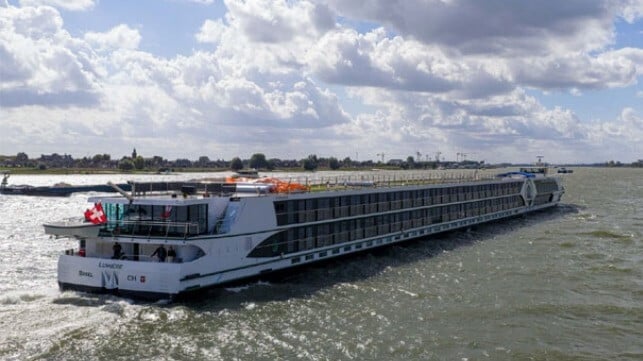First-Ever Fully Autonomous River Cruise Completed

A groundbreaking milestone in maritime technology has been achieved as the luxury river cruise ship Lumière successfully completed the first-ever fully autonomous inland dock-to-dock sailing. The 135-meter vessel, which can accommodate 130 passengers and 50 crew members, navigated approximately six nautical miles on the Netherlands’ Merwede River without human intervention, under the watchful eye of its captain. This demonstration marks a significant advancement in the use of autonomous systems in the cruise industry.
Autonomous Voyage Demonstrates Advanced Technology
The historic journey took place on October 24, with the Lumière sailing from Hardinxveld-Giessendam to Gorinchem. Despite challenging weather conditions, including a gale-force crosswind of Beaufort 8 (34–40 knots), the ship maintained its course effectively. David Woudenberg, Head of Product Development at Shipping Technology, emphasized the importance of this achievement, stating, “With the Dock2Dock project, we’re proving that autonomous technology is no longer futuristic – it’s happening now. Safely, efficiently, and sustainably.”
The successful demonstration utilized advanced systems, including Retina’s M-Pilot maneuvering technology and Shipping Technology’s ST BRAIN and Autonomous Lane Assist (ALA). These systems worked in harmony to control the ship’s thrusters and engines, optimizing its route and managing rudder and pod movements. The technology continuously assessed various factors, such as vessel load and engine performance, to ensure the most efficient navigation. The companies involved noted that the system performed flawlessly, highlighting its potential to enhance safety and reduce fuel consumption through optimized routing.
Innovations in Sustainable River Cruising
In addition to its autonomous capabilities, the Lumière is equipped with two HP-inline Hybrid Powertrains, allowing it to operate in fully electric mode at speeds of up to 11 km/h. This innovative power system was recently tested, demonstrating the ship’s ability to enter ports and navigate locks without emissions or noise. The battery can be recharged using shore power or through a shaft generator, showcasing a commitment to sustainability in river cruising.
ABS Approves Autonomous Navigation Innovations from HHI and KSOE
According to Bart Vos, a naval architect and project manager for Scylla, the focus of this technology is not to replace the captain but to enhance navigation efficiency and support crew members. The autonomous systems are designed to provide experienced captains with more time to focus on other critical tasks while offering less experienced crews additional support. This pivotal moment in inland shipping underscores the potential for smarter tools that improve operational efficiency and safety in the maritime industry.
